Prevent Cheating and Safeguard Academic Integrity at {Scale}
One integrated toolkit goes beyond detecting plagiarism to addressing the root cause of cheating with keystroke-based learning behavior insights, assessment randomization, and proactive, personalized AI-powered learner feedback.
Out-of-the-box, Codio’s Behavior Insights comes equipped with indicators specifically configured to detect plagiarism. The intuitive dashboard displays tiles corresponding to indicators above or below predetermined thresholds.
All this can be done with a click of a button. Codio’s code plagiarism checker compares the code projects of all students within a class for a specific teaching unit. Include other reference codes for comparison to use as a code similarity checker. Results are available anytime and last forever.
In just a few clicks, create and assign different assessments for each student. This individualizes their course materials and saves countless hours in course maintenance and configuration. By giving each student unique programming assessments, you can avoid plagiarism or cheating altogether.
Code Playback is built into Codio’s integrated development environment (IDE) and is extremely easy to use. With a few clicks, access all of the files that students produce in Codio.
Now, when teachers want to see how a particular code file was built, they can simply select Tools → Code Playback and Codio will open the history of the in-focus code file. For a multi-file project, click on the folder icon to pull up the history of other project files too.


Chair, Department of CS & Engineering

According to the creators of the plagiarism detection tool MOSS, the software checks code for plagiarism in two ways. This is done through keyword analysis and by looking at groups and sequences of words.
However, in some cases, paraphrasing is not detected because the duplicate content in the text may be different enough that it doesn’t get identified as a match. The software also scans for matches by comparing the style of writing and identifying the order of words. This creates a “fingerprint” of the document, making it easier to detect plagiarism.
This combination of methods to detect copied code is the best method to ensure original content.
Your students learn by completing original work and submitting that work for grading and feedback. Codio can help prevent plagiarism and detect cheating. To help ensure academic integrity, Codio’s platform offers the following code cheating and plagiarism checking and prevention tools.
Behavior Insights enable teachers to see at scale whether students have copied and pasted their work from tools like ChatGPT or elsewhere. Our Plagiarism detection tool looks for similarities between student code submissions.
In addition to that, a cheating or plagiarism “scanner”—Code Playback—can help instructors understand how a student writes or produces code. This can help detect plagiarized content in order to promote and maintain academic integrity.
Codio integrates the Dolos plagiarism detection system developed by CS educators for programming courses. This integration provides instructors with enough data and analysis for a lecturer to make a conclusive, final decision. The burden of project data preparation and submission to remote systems such as Moss and JPlag is removed. The result is a single-click process for the lecturer or teacher.